|
Regioselektiwiteit in die palladium-gekataliseerde hidro-esterifisering van stilbene en verwante alkene
Authors: Maretha du Plessis1, Charlene Marais1, Ben C.B. Bezuidenhoudt1
Affiliations: 1Department of Chemistry, University of the Free State, South Africa
Correspondence to: Maretha du Plessis
Postal address: PO Box 339, Bloemfontein 9300, South Africa
How to cite this abstract: Du Plessis, M., Marais, C. & Bezuidenhoudt B.C.B., 2014, ‘Regioselektiwiteit in die palladium-gekataliseerde hidro-esterifisering van stilbene en verwante alkene‘, Suid-Afrikaanse Tydskrif vir Natuurwetenskap en Tegnologie 33(1), Art. #1006, 1 page.
http://dx.doi.org/10.4102/satnt.v33i1.1006
Note: A selection of conference proceedings: Student Symposium in Science, 27 and 28 October 2012, North- West University, South Africa. Organising committee: Mr Rudi W. Pretorius (Department of Geography, University of South Africa), Dr Ettienne Snyders (South African Nuclear Energy Corporation [NECSA]) and Dr Cornie G.C.E. van Sittert (School of Physical and Chemical Sciences, North- West University).
Copyright Notice: © 2014. The Authors. Licensee: AOSIS OpenJournals. This is an Open Access article distributed under the terms of the
Creative Commons Attribution License, which permits unrestricted use, distribution,
and reproduction in any medium, provided the original work is properly cited.
|
Referaatopsommings
|
Open Access
|
Abstract
Regioselectivity during the palladium catalysed hydro-esterification of stilbenes and related alkenes. This research is about the use of a catalytic process entailing the regioselective hydro-esterification of 2-hydroxystilbenes followed by cyclisation to form the heterocyclic C-ring of the isoflavonoid skeleton. Regioselective influence of the electronic environment around the alkene substrate is limited therefore stilbenes with electron-withdrawing and electron-donating substituents on the two aromatic rings, were synthesised and subjected to palladium catalysed hydro-esterification.
Inhoud
Flavonoïede verteenwoordig polifenoliese verbindings wat volop in die natuur voorkom en ʼn verskeidenheid biologiese en fisiologiese aktiwiteite (Nijveldt et al. 2001) vertoon, onder andere anti-inflammatoriese, antivirale, anti-allergeniese en antigewasvormende eienskappe (Del Rio et al. 2004). Die potensiële terapeutiese waarde van hierdie verbindings het as dryfkrag gedien vir metodologie-ontwikkeling (Harkat et al. 2008; Basabe et al. 2010; Khan et al. 2010) om nie net toegang te verkry tot meer materiaal as wat uit die natuur geïsoleer kan word nie, maar ook om flavonoïede te kan sintetiseer met spesifieke nie natuurlike substitusiepatrone. Bestaande tegnologie vir die bereiding van hierdie natuurprodukte word gekenmerk deur die gebruik van tydrowende multistapprosesse waarin stoïgiometriese hoeveelhede reagense benodig word, asook drastiese reaksiekondisies en lae algehele opbrengste verkry word (Geissman 1962; Harbourne 1988; Nijveldt et al. 2001). Ten einde omgewingsvriendelike tegnologie vir die bereiding van flavonoïede te ontwikkel, is besluit om die moontlike benutting van die katalitiese hidro-esterifiseringsreaksie as sleutelproses te ondersoek vir die sintese van flavonoïede. Tydens die beoogde proses is beraam dat 2-hidroksie-stilbene (1) deur middel van hidro-esterifisering na die propanoësuur-derivate (2) omgeskakel sou word wat daarna deur siklisering die flavonoïede (3) sou lewer. Alhoewel die effek van steriese faktore op regioselektiewe beheer tydens hidroformilerings- en hidro-esterifiseringsprosesse bekend is, ontbreek kennis oor die invloed van die elektroniese omgewing ten aansien van die dubbelbinding op die uitkoms van hierdie reaksies steeds grootliks. Ten einde hierdie leemte te ondersoek, is stilbeenmolekules met elektrononttrekkende (bv. Triflaat-groep) en elektrondonerende (bv. metoksiegroep) substituente onderskeidelik op die twee aromatiese ringe gesintetiseer en aan palladiumgekataliseerde hidro-esterifisering onderwerp.
 |
FIGUUR 1: Retrosintese vir die sintese van isoflavono´ede met behulp van hidroesterifisering.
|
|
Literatuurverwysings
Basabe, P., De Román, M., Marcos, I.S., Diez, D., Blanco, A., Bodero, O., Mollinedo, F., Sierra, B.G. & Urones, J.G., 2010, ‘Prenylflavonoids and prenyl/alkyl-phloroacetophenones: Synthesis and antitumour biological evaluation’, European Journal of Medicinal Chemistry 45(9), 4258–4269.
http://dx.doi.org/10.1016/j.ejmech.2010.06.025
Del Rio, J.A., Fuster, M.D., Gómez, P., Porras, I., Garćia-Lidón, A. & Ortuño, A., 2004, ‘Citrus limon: A source of flavonoids of pharmaceutical interest’, Food Chemistry 84(3), 457–461.
http://dx.doi.org/10.1016/S0308-8146(03)00272-3
Geissman, T.A., 1962, Chemistry of the Flavonoid Compounds, Pergamon, New York. Harbourne, J., 1988, The Flavonoids:aAdvances in research since 1980, Chapman and Hall, New York.
http://dx.doi.org/10.1007/978-1-4899-2913-6
Harkat, H., Blanc, A., Weibel, J. & Pale, P., 2008, ‘Versatile and Expeditious Synthesis of Aurones via AuI-Catalyzed Cyclization’, Journal of Organic Chemistry 73(4), 1620–1623.
http://dx.doi.org/10.1021/jo702197b
Khan, M.K., Rakotomanomana, N., Loonis, M. & Dangles, O., 2010, ‘Chemical Synthesis of Citrus Flavanone Glucuronides’, Journal of Agricultural and Food Chemistry 58(14), 8437–8443.
http://dx.doi.org/10.1021/jf1010403v Nijveldt, R.J., Van Nood, E., Van Hoorn, D.E.C., Boelens, P.G., Van Norren, K. & Van Leeuwen, P.A.M., 2001, ‘Flavonoids: A review of probable mechanisms of action and potential applications’, American Journal of Clinical Nutrition 74(4), 418–425.
|